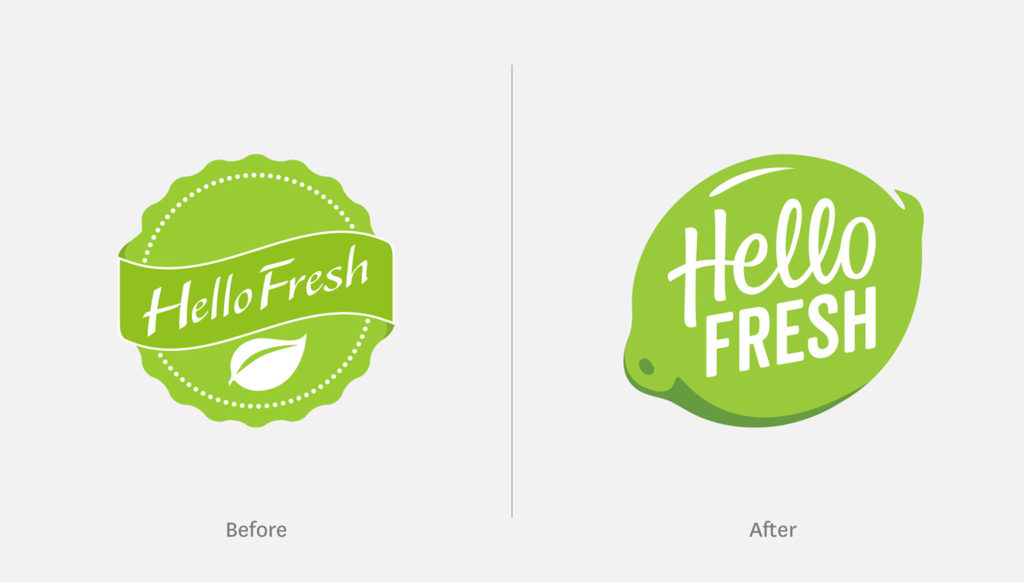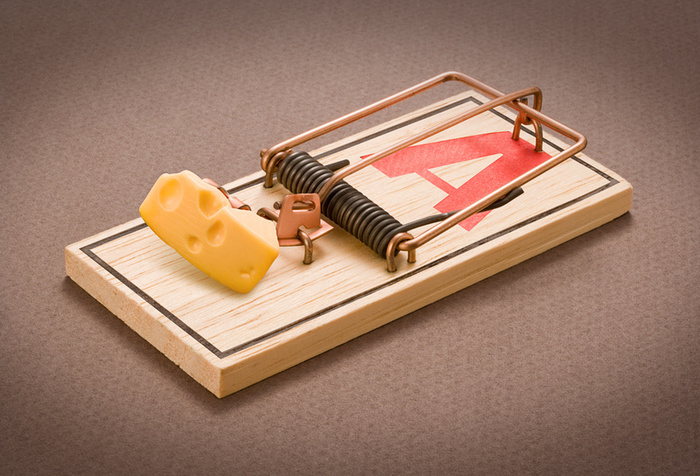By
Mark DiMassimo | 12/13/2017 | in

Inspiring Action.
People pay us to get people to do things.
And we’re really good at it.
It’s an awesome responsibility.
Changing people’s behavior.
Their decisions and habits.
That’s why we’re not a “performance marketing” agency. Or a “digital” agency. Or a “direct” agency.
That’s why we’re an Inspiring Action agency.
That’s why we only incite more inspiring actions.
And more empowering habits.
And why we use our powers to ignite growth only in organizations that promote those kinds of behaviors.
But responsibility isn’t the only reason.
People bet their careers on our results every day.
We have learned by long experience that inspiring action simply works better.
We learned by being in big, siloed agencies that undermined our results by separating us.
We learned by proving it through results.
That the two most important factors for igniting growth are Inspiration and Action.
Inspiration – is there an idea or experience at the core of the brand that inspires unreasonable passion.
Action – is there urgency and ease and flow and momentum in the funnel of actions that create even deeper engagement and customer value.
Inspiring Action ignites growth by changing behaviors. Each one of us made an inspiring decision to come together.
To use what we’ve learned to inspire action for worthy organizations.
By
Team DIGO | 12/05/2017 | in
We can help people change their decisions and habits in ways that empower and delight them.
We combine the findings of behavioral economics, mobile clinical interventions, persuasion design, direct marketing, CRM, and decades of A/B split testing and optimizations into an integrated practice of behavior change marketing.
This video of our Chief recapping his time at the Yale Behavioral Economics Intensive dives into the topic in greater detail:
Want to learn even more about Behavior Change Marketing? These articles are a great place to start:
Behavior Change Science Update: Moral Reframing
What’s different about the one-in-a-thousand organization that thrives and outperforms? That builds a brand and inspires a movement?
Inspiring Action Brand of the Month: Duolingo
If you and your team are trying to build an inspiring action brand, or know anyone else who may find this helpful, feel free to share this amongst them. If you want to join the conversation yourself, reach out to us on twitter, we’d love to hear from you.
By
Mark DiMassimo | 09/05/2017 | in

I can’t remember when I first became fascinated with brands, but I know I was just a young child. Back then, Cheerios and Wheaties, Esso and Shell, Little Friskies cat food, Avis Rent-a-Car, were like cartoon characters to me. They had distinct personalities and I felt like I knew them, just like I knew the characters in my favorite shows.
From the brands I learned to love on TV to the more mature brands I later grew to love. The rock bands I worshipped. The threat and allure of Disco, Punk, New Wave and beyond. The religions I was pitched at school, in the streets and at my front door. My first credit cards from Citibank and American Express. Nike and Apple.
What art form gives you all the senses to work with? Sight. Sound. Smell. Hearing. Touch. And story, imagination and emotion too?
The dream began to form in me of building brands the way Picasso made paintings, the way Frank Lloyd Wright made buildings, the way Edison made inventions. Could I give thought to every touch point, and express a distinct and attractive personality that would remain consistent without ever being boring or trite?
I wanted to learn from the best, so I went to work for the best in the business. I chose as my clients entrepreneurial masters of brand building. I never thought of myself as the master, but only as student and servant. I practiced my craft obsessively. I stayed up nights writing. I read every book. I invited my heroes to lunch, always trying to learn a bit more, to add another key.
Yes, all of that time, I was a direct marketer. All of that time, I was measured by how well my work pulled, by beating controls, by winning tests, by conquering the A/B splits.
I learned all the tricks, but my greatest trick of all and the most effective was the ability to evoke emotion through brand. “A great brand idea is the ultimate response device,” I said. And I proved it repeatedly.
I’ve watched a lot of direct brands and careers die since then. Simultaneously, I’ve watched the great direct-led brands become the leading brands of our time. American Express, Apple, Amazon, Airbnb … and that’s just the A’s!
Remember, if you are in the business of selling directly, don’t merely sell. Build a rich, evocative, emotional brand. Use every touch point to differentiate. Err on the side of too much personality. Crush apathy. Make objectivity impossible.
Just as I do, so many wildly successful marketers remember their first journey of brand discovery as the true commencement of their marketing careers. They look back on that quest to uncover the insight that can change and organize everything going forward. The way they followed the data to the customer journey and came back with the golden insight, then mined that inspiring idea for all it was worth.
It’s a revolution in a brand, in a business and in a marketer’s career. In fact, many marketers have told me, “That’s when I first felt like a real marketer.”
Let’s do marketing for real. Let’s build a masterpiece.
By
Mark DiMassimo | 07/14/2017 | in

We marketers spend so much time on our marketing, we can be forgiven for thinking that it’s the first and last word about the brand.
Perhaps there was a time when this was more or less true. Not today.
Today, the conversation about brands, services and products is never more than a couple of clicks away. People have more tools than ever to find out what other people really think about the things we sell. Advertising is a smaller and smaller part of the conversation.
That’s why an integrated growth plan must start with the behaviors and beliefs of the audience. It needs to embrace the entire brand experience. The customer journey becomes the road map. By prioritizing the touch points with the greatest leverage, real results improvement can often be achieved in short order.
So, what about the 57%? That’s the part of the buying process that a prospect typically engages in before they talk to someone from the company. The other 43% is important, but the whole 100% is where the winners play.
By
James Nieman | 06/01/2017 | in

In the ninth episode of “The A-List” podcast, host and DiMassimo Goldstein Chief Creative Officer Tom Christmann chats with his long-time friend Megan Skelly, the Group Executive Creative Director at R/GA. Megan has been the creative lead on some of the world’s biggest name brands such as Coca-Cola, Target, Stella Artois, and most recently Verizon Wireless. Last year, Business Insider named her one of the “30 Most Creative Women in Advertising” – an honor that she fully deserves.
Tune in and hear Megan and Tom talk about their time together at Kirshenbaum, stepping over dead bodies, not being afraid to be stupid and so much more. Full episode and show notes below!
Show Notes
- [00:00 – 01:36] Intro
- [01:37 – 09:24] Megan talks about her childhood in Connecticut and her aspirations of becoming a painter
- [09:25 – 13:40] Living on a pull out couch for three years in Westport and trying to get a job in the recession
- [13:41 – 19:20] Moving to New York City and working at Wonderman
- [19:21 – 26:00] Megan talks about her role models in the industry
- [26:01 – 31:03] Working on Cablevision at KBS and becoming a storyteller
- [31:04 – 37:16] “Making it”, using fear as a motivator, and trusting the process
- [37:17 – 44:20] Not being afraid to be stupid and knowing your strengths
- [44:21 – 46:05] Why the industry is more exciting today than ever
- [46:06 – 54:50] The different DNA of R/GA
- [54:41 – 55:52] Outro
“The A-List” is a podcast produced by DiMassimo Goldstein, recorded at the Gramercy Post, and sponsored by the Adhouse Advertising School, New York’s newest, smallest, and hippest ad school. You can subscribe and rate the show on iTunes or listen along on SoundCloud. For updates on upcoming episodes and guests, be sure to like the A-List Podcast on Facebook and follow host Tom Christmann on Twitter. If you want to be interviewed for an upcoming episode, contact us at AdhouseNYC.com.
By
Claudia Mark | 01/27/2017 | in
![1_HF_Graphis_Mockup_Blog[1]](https://digobrands.com/wp-content/uploads/2017/01/1_HF_Graphis_Mockup_Blog1-1024x588.jpg)
We are thrilled to announce that the identity our design team created for inspiring action client HelloFresh has won a Silver Award in Graphis Logo Design 9 Competition. Graphis is committed to presenting and promoting the work of exceptional talent in Graphic Design, Advertising, Photography and Art/Illustration. Our work will be featured in the Graphis Logo Design9 & Letterhead8 hardcover book, which can be purchased here.

We began the rebrand process in early 2016, collaborating closely with HelloFresh’s Global Design and Marketing team. The new logo and brand launched in late July and has been embraced by the company and its subscribers alike. We also redesigned the packaging which has been adapted in all nine of HelloFresh’s global markets. Check back with us soon for a full case study!
![3_HF_GraphisBlog_Apron[1]](https://digobrands.com/wp-content/uploads/2017/01/3_HF_GraphisBlog_Apron1-1024x582.jpg)
By
Team DIGO | 11/09/2016 | in

When you have a better mousetrap, you don’t hide the fact and you don’t need to dress it up. The very simplicity of your presentation becomes the ultimate proof of the superiority of your product and the confidence of your company. Only the best can be absolutely plain and direct.
- “1000 songs in your pocket.” – Apple
- “15 minutes will save you 15% on car insurance.” – Geico
- “People do stupid things, like paying too much for phone service.” – Vonage
- “A great shave for a few bucks a month.” – Dollar Shave Club
- “Rides in minutes.” – Lyft
- “Be more productive at work with less effort.” – Slack
Of course, your substance must be presented with style. Who doesn’t want to be an iPod silhouette, for example? Geico’s pragmatic punch line is always preceded by a jab of accessible humor. Vonage brings pure and stupid joy to saving money on broadband phone service. The message, however, remains the same.
Do you have a better mousetrap? Then fight like hell to present it simply.
By
Team DIGO | 10/26/2016 | in
We wrote this over a decade ago, and ever since we’ve been discovering and inventing new ways to organize and inspire word-of-mouth in social networks and beyond. Enjoy!
We’ve all heard the expression, “Word of mouth is the best advertising.” We’ve seen brands built seemingly on strong word-of-mouth alone. But what’s harder to see is the contribution of strong word-of-mouth to brands with significant traditional advertising budgets.
Two hundred million dollar advertisers with negative word-of-mouth are not uncommon, and without fail the word-of-mouth negates the advertising. On the other hand, strong word-of-mouth will multiply a budget, making $15 million work like $150 million. Just consider Starbucks, Crunch Fitness, and JetBlue Airways.
How can you manage word-of-mouth? Start with your heaviest, most loyal users and turn them into Brand Advocates. These are people so passionate about the brand they can’t help but express themselves in your support. Know them. Know what they’re saying. Use planning to learn their word-of-mouth strategies for advocating the brand. Then devise programs to support those strategies.






![1_HF_Graphis_Mockup_Blog[1]](https://digobrands.com/wp-content/uploads/2017/01/1_HF_Graphis_Mockup_Blog1-1024x588.jpg)

![3_HF_GraphisBlog_Apron[1]](https://digobrands.com/wp-content/uploads/2017/01/3_HF_GraphisBlog_Apron1-1024x582.jpg)
